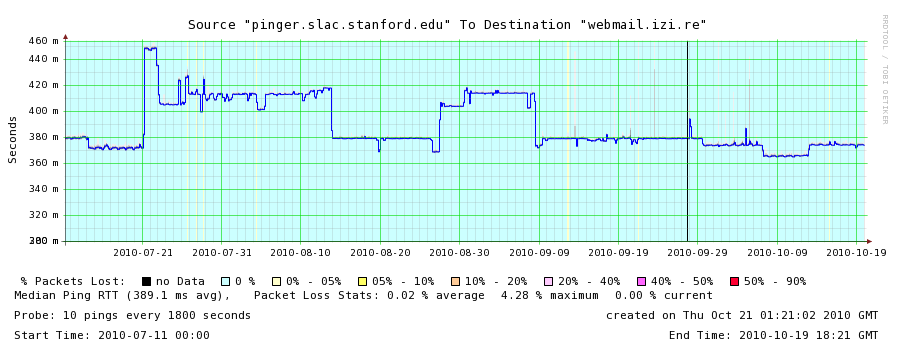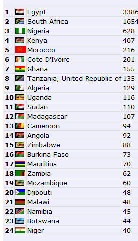Introduction
As of October 2010, three new African submarine cables became active and fully functioning: MaIN OnE, EASSy and LION. These are in addition to cables that are already functioning: SAT3/SAFE, TEAMs and Seacom. This study is a continuation of already documented case studies of African internet and African submarine cable systems.
...
The host at webmail.izi.re doesn't show any appreciable difference in minimum RTT since the LION cable system became active. We do not have data as far back as March but minimum RTT readings during January, February and March were 364ms, 372ms and 390ms confirm this observation. The graph also shows that this trend continued. We observed 365ms, 364ms and 355ms of RTTs during the months of April, May and October.
Intra-Africa (inland Africa) fibre optics
The main purpose of the inland Africa fibre optics network is to connect up rest of the sites and countries to landing points of African submarine cable systems. This will extend coverage from landing points to capitals and major cities. Most universities and institutes will be able to take advantage of this and collaborate in various international projects.
The interactive map displays currently functional (as of October 2010) and ongoing/scheduled fibre optic deployments.
Indicators of Internet penetration in Africa
BGP Prefixes
The Border Gateway Protocol (BGP) backs the routing decisions on the Internet. It maintains a table of IP networks or 'prefixes' which designate network reachability among autonomous systems (AS). Thus the number of prefixes is roughly the number of networks that appears on the Internet. The number of BGP prefixes for Africa is shown below. The data is from BGPMon. It is seen that Egypt leads by a factor of about over South Africa (the country with the second most BGP prefixes)
Table of top 25 countries | Map of top 25 countries |
|---|---|
| |


